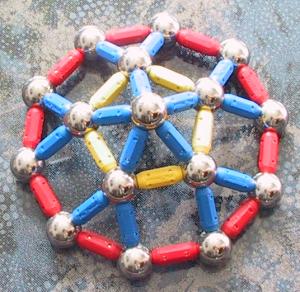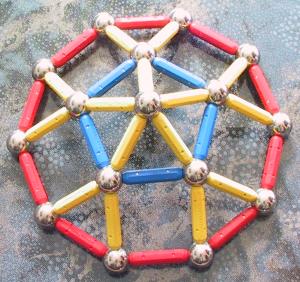Triangles are stable without any support:
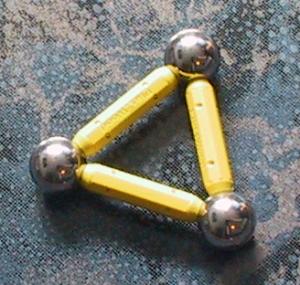
Polyhedra in SuperMag will only be stable if their faces are stable. Otherwise, they will collapse. I don't know what the exact conditions are that a regular polyhedron's face must satisfy for the polyhedron to be stable, but it seems sufficient to guarantee that all vertices of the face will always have the same distance from some point, which need not necessarily be the center of the polygon (of course, in two dimensions it would always be, but we're building three-dimensional constructions).
On this page I'll show how to build all stable polygons that are needed to construct all Platonic and Archimedean solids. Note that I'll only discuss polygons which use one bar per edge. If you are interested in building larger polygons, see my page on scaling polyhedra.
Triangles are stable without any support:

Short squares are best stabilized with a long bar in a diagonal. Long squares can be stabilized with a short 4-star:
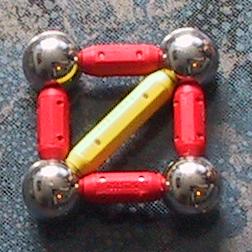
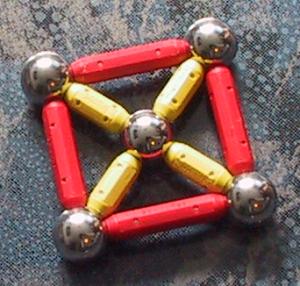
Pentagons can be stabilized with a 5-star. Note that you cannot stabilize a long pentagon with a short 5-star because the bars are too short.
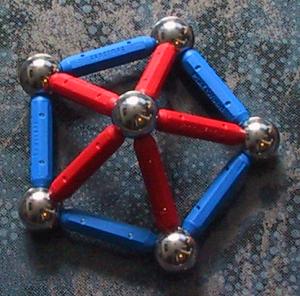
Hexagons are best stabilized with a 6-star, the center of which is the center of the triangle:
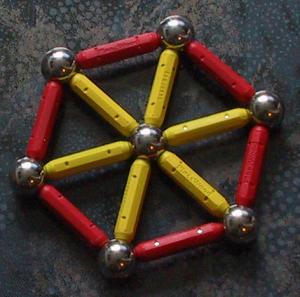
I have not yet needed a heptagon, but I figured out how to stabilize them, anyway. A short heptagon can be stabilized with a long 7-star:
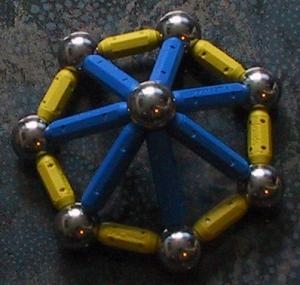
For a long heptagon, a 7-star can be used as well, but each segment must be made out of a long bar directly connected to a short bar:
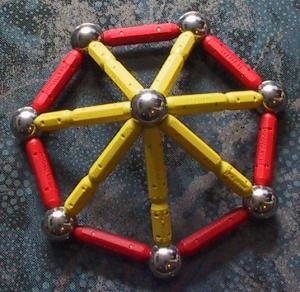
For an octagon, the same techniques can be used as for stabilizing heptagons:
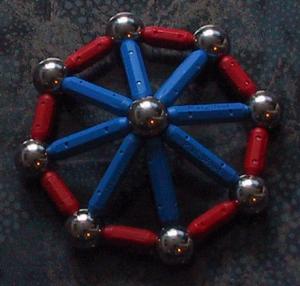
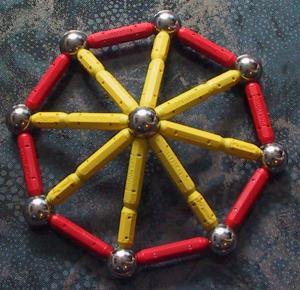
I haven't figured out yet how to build a stable nonagon, but then, I haven't had any need for one yet.
The decagon is the first regular polygon (or rather the one with the lowest number of vertices) that cannot be stabilized with a star, at least as far as I can tell. The problem is that there are too many bars that have to connect to the sphere in the center. One solution I have found to this problem is that instead of using a single sphere as the center, one can use a pentagon and then connect each vertex of the pentagon to two neighboring vertices of the decagon. This technique works for short as well as for long decagons:
